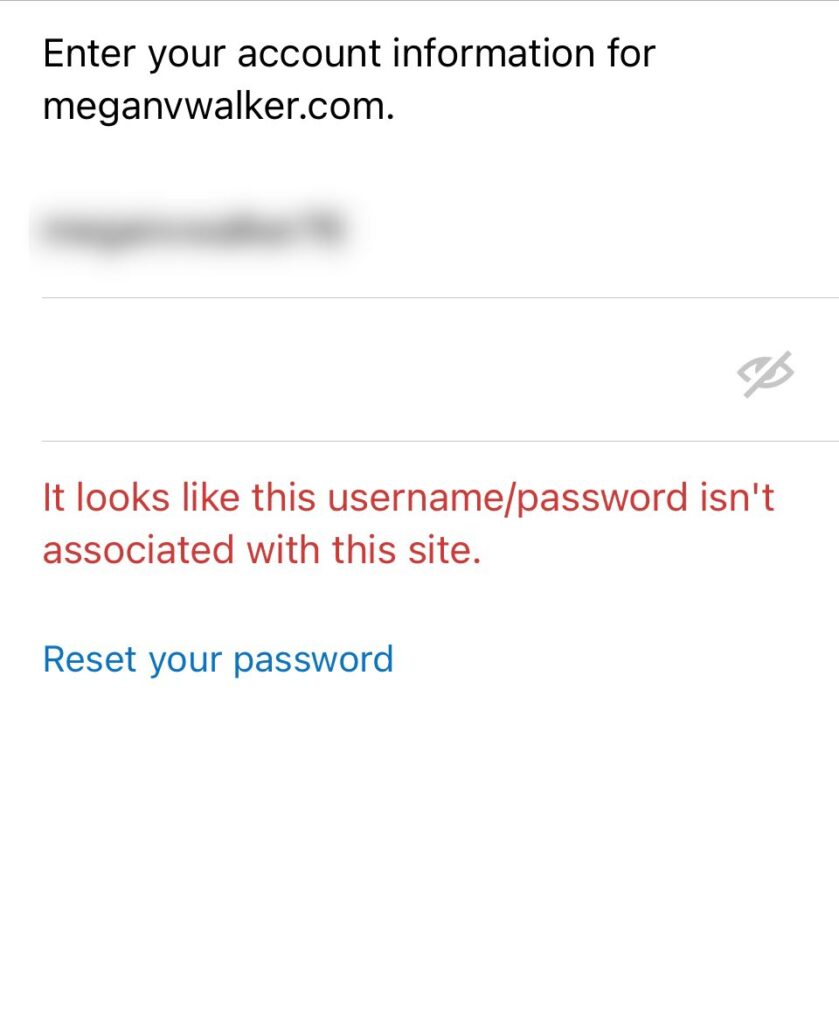*** NOTE: ALL INFORMATION IS ACCURATE AT DATE OF PUBLISHING ***
Very off-brand with this post, but as usual, if this is something that I had an issue with and took me a while to figure out, I guess it could be the same for someone else. So if it is a help to anyone, that’s great! I use WordPress for my website which I love, but this is about a WordPress mobile app issue. I enjoy getting in to the PHP and adding new functionality, or adjusting the CSS to make the site look different and exactly how I want it. Although I wouldn’t do that from my phone, I did want to be able to review and reply to comments faster and doing that via the mobile app seemed to make sense. However, I just couldn’t get logged in! This post explains why I was getting an error and what I needed to do to fix it.
First, what was the error? Well I couldn’t even get passed the login screen. I would put in my user name and password and get a message that told me the username/password isn’t associated with this site. Well actually WordPress, yes, yes it is! I knew it was the right information so needed to dig in to this and figure out why I couldn’t get passed this step.
To help with security, I use a service called Wordfence. It has blocked literally hundreds of attempts at bots and hackers trying to log in to my site. It’s a must in my eyes. As part of that, I have Multi Factor Authentication (MFA) turned on. This means each time I log in, I have to provide my user name, password and THEN a code generated by the Authenticator app. What was happening when I tried logging in to the WordPress App was it was expecting those 3 things, so by just adding the username and password, it was missing that last generated code. So how can you get around this?
Could be different if you are using another security based plugin, but for Wordfence, just go to All Options and make sure this field here is unticked. By default it disables WordPress Application passwords, so untick it.
An application password allows you to set up a password that can be used along with your own username that you can add in to another system or app, such as the WordPress mobile app. Go to the users section in WordPress, find your user record and scroll down to the Application Passwords section so you can add a new password. Give it a name so it’s clear later on where the password is being used, then click Add New Application Password. You will then see a window with the password that has been generated. You will now need to use THAT password along with your username when trying to log in to the mobile app. Note that this is not changing your own password in anyway, and you will still continue to log in to your site with your username and password, and then a code from your Authenticator app.
One last thing to check, go to Login Security and find the setting for Require 2FA for ZML-RPC call authentication and make sure this is skipped. This will make sure the step asking for a code from the Authenticator app will no longer happen. Now try logging in to the mobile app and it should work for you!
If you ever want to stop using the app or remove the password for it, you can simply go back to your user record in WordPress, scroll down to the Application Passwords section and click Revoke to remove it.
Hope this helps someone in the same boat as me. Let me know in the comments if you do, oh and I will be able to reply via my mobile phone too. 😉
Check out the latest post:
Tips & Tricks Using The HTML Text Control In Your Custom Pages
This is just 1 of 559 articles. You can browse through all of them by going to the main blog page, or navigate through different categories to find more content you are interested in. You can also subscribe and get new blog posts emailed to you directly.





